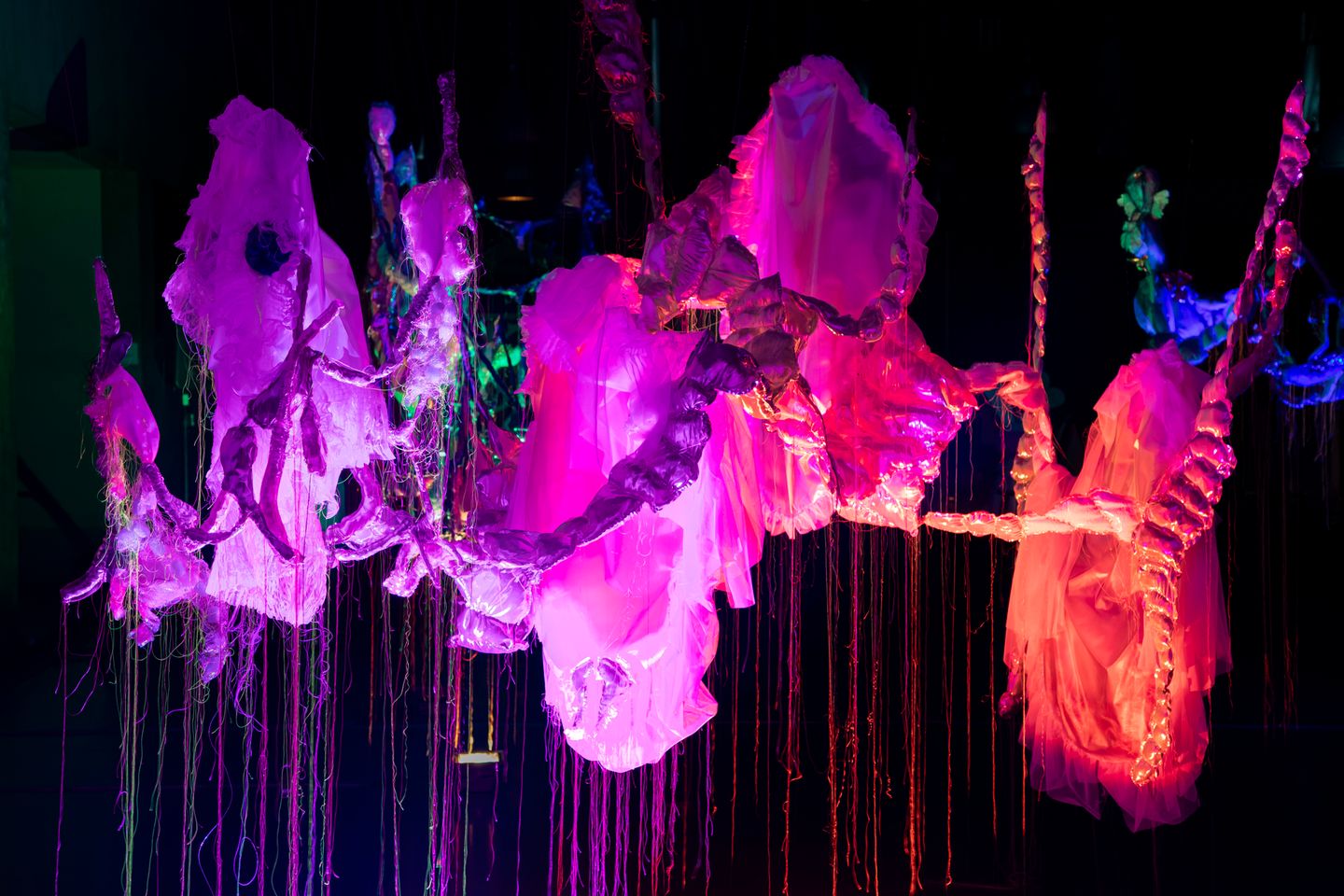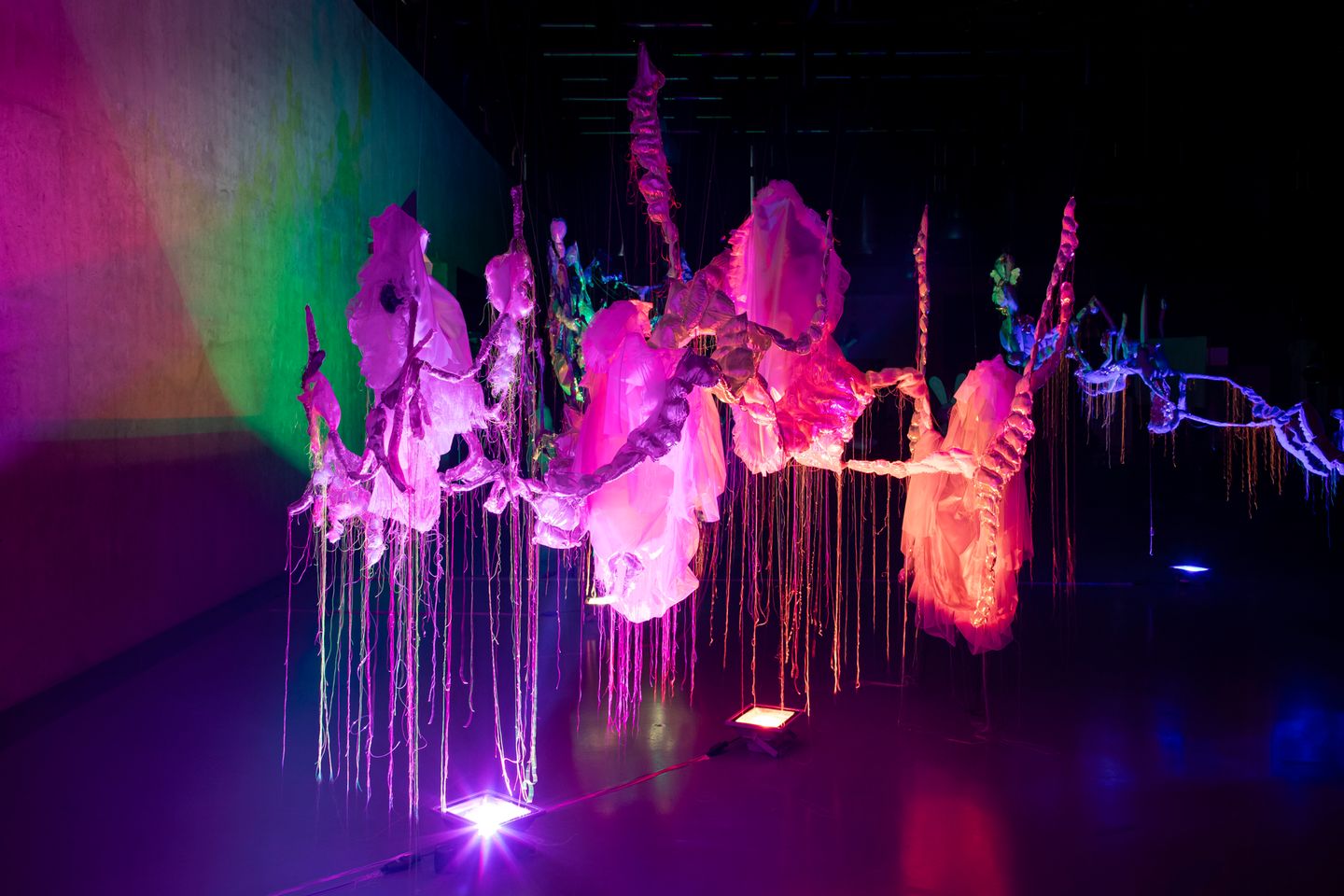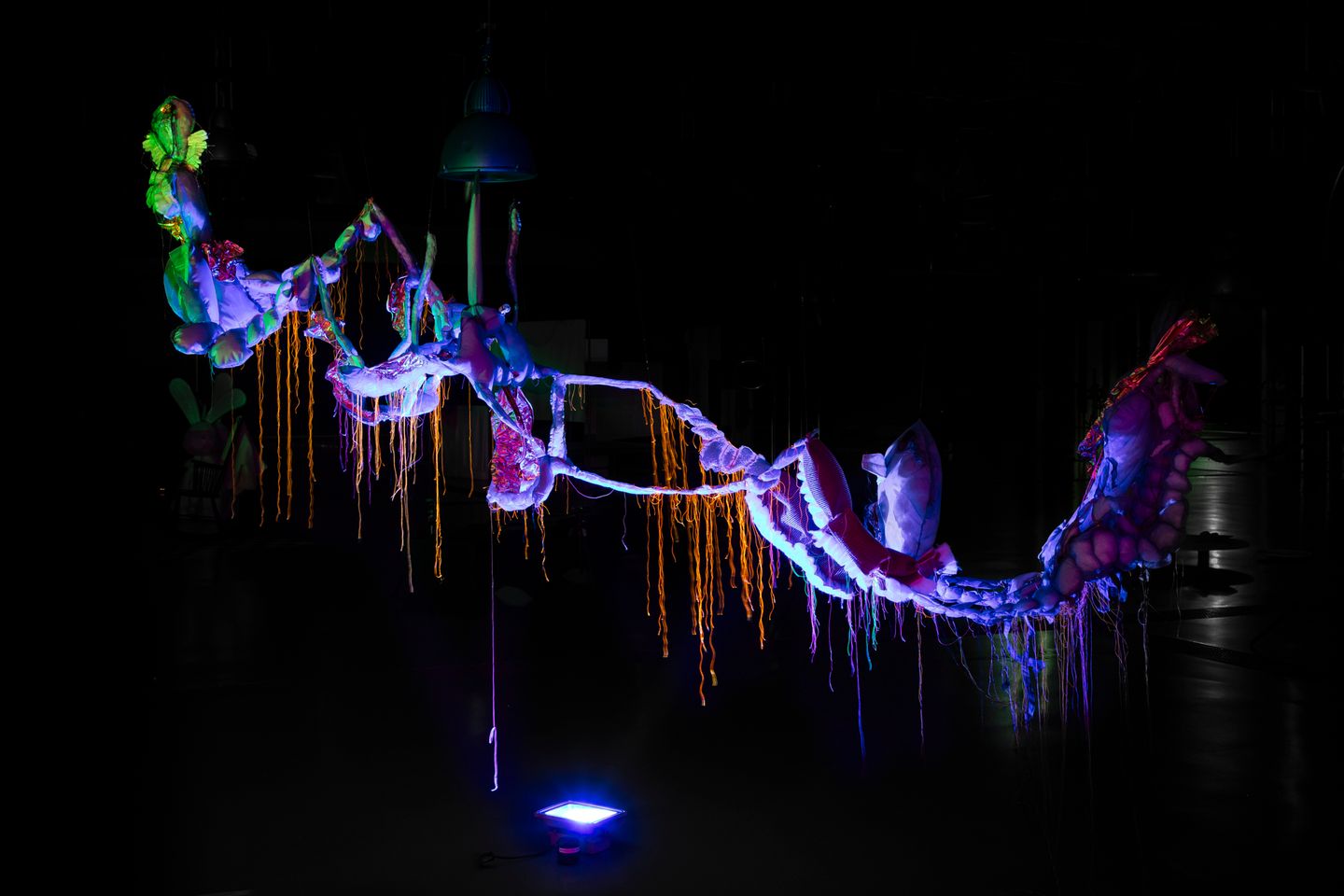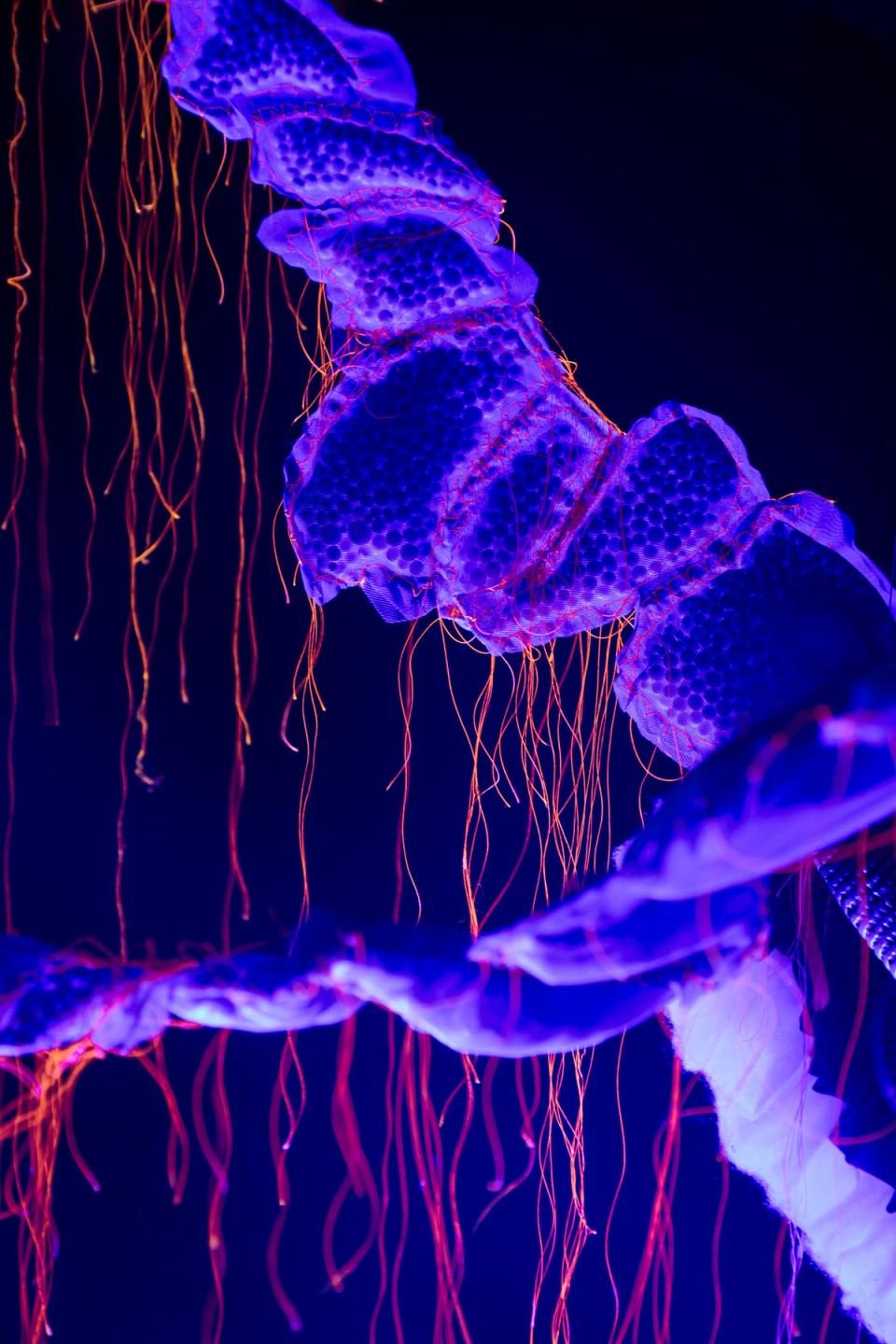
Posseida Platuntilda
POSSEIDA PLATUNTILDA brings a more sensitive perspective to the scientific history traditionally dominated by men. This project aim brings life to neutral and objective scientific representations. Adèle Guilbault believes science is full of narratives. Theories can be validated at one time, invalidated at another and rehabilitated afterwards. This installation plays with scientific codes by blurring the boundaries between reality and fiction, and between irrefutable and false information. Posseida Platuntilda is an imaginary foundation of species rescued from scientific laboratories. Visitors are exposed to a pseudo-scientific discovery, a human who has become a marine species.The fiction begins with a real scientific theory, then emancipates itself from it in an immersive dreamlike installation. This project explores the theory of chordates, the largest group of animals on Earth, including humans. This theory is studied at the embryonic stage, all the species in this group share a common anatomical form, the notochord. It becomes the nervous system and the brain for the humans. The embryonic diagrams was found, in the library of the University of Geneva. The reseach about fiction take place at the archives of the Zoological Museum of Lausanne to consult their iconography. Adèle Guilbault already based a written work on cryptozoology. Cryptozoology is a pseudo-science concerned with fantastic creatures (Mermaids, Bigfoot, Lockness Monster).



